Description
A truly stunning, sparkling and beautiful cluster of crystals!
With green, UV-reactive fluorite, a slight dusting of white quartz, and hematite inclusions, it’s quite colorful!
Darkened purple by Iron and Manganese, with traces of a half-dozen other elements, it really has quite the story to it geologically.
Unearthed just last year from 200′ below the surface; 5,000′ feet in elevation in the Unaweep Canyon near Whitewater, CO.
Copied from the Humming Bird Mine’s page:
XRF analysis of the Humming Bird Mine Amethyst indicates relatively high concentrations of Iron (Fe) and Manganese (Mn) within the samples of the dark purple quartz. Other common trace elements present include: Nickel (Ni), Copper (Cu), Zinc (Zn) and Chromium (Cr), which are found in relatively moderate concentrations. Relatively small concentrations of Aluminum (Al), Titanium (Ti) and Cobalt (Co) are also present. Vanadium (V) has been observed in concentrations ranging from low to moderate. The color variations within the Amethyst is directly correlated to the concentrations of both iron and manganese.
The third phase of mineralization was the Fluorite. It can be dated to 30 – 35 million years ago. Trace elements in the Fluorite include: Phosphorus (P), Sulfur (S), and Potassium (K). It is obvious there was some fault movement prior to this hydrothermal solution flow, as the Fluorite cemented fractures separating the Calcite from the Quartz crystals in brecciated zones. One thing to note is that the Fluorite fluoresces under LW UV lighting.
The fourth mineralization in this sequence was a second crystallization of Amethyst Quartz. This solution contained lower concentrations of Manganese (Mn). As crystallization continued, Iron (Fe) and Manganese (Mn) continued to decrease until almost clear Quartz crystallized.
The fifth phase of mineralization, which can be dated to 23 million years ago (San Juan Sulfur intrusion), consisted of a Sulfur-rich solution. It is responsible for the generation of Pyrite and Chalcopyrite. Trace elements in this mineral deposit include: Calcium, Cobalt, Copper, Sulfur, Zinc, Silica, Aluminum.
The sixth mineralization phase occurred with the precipitation of copper carbonates Malachite and Azurite (and probably a few more copper-related minerals yet to be found). These minerals don’t appear to be the product of hydrothermal mineralization, but the oxidation of the Chalcopyrite. This precipitation has caused the Malachite to find its way into cracks and broken crystals, filling the damage caused from brecciation and fault movement over the millions of years.


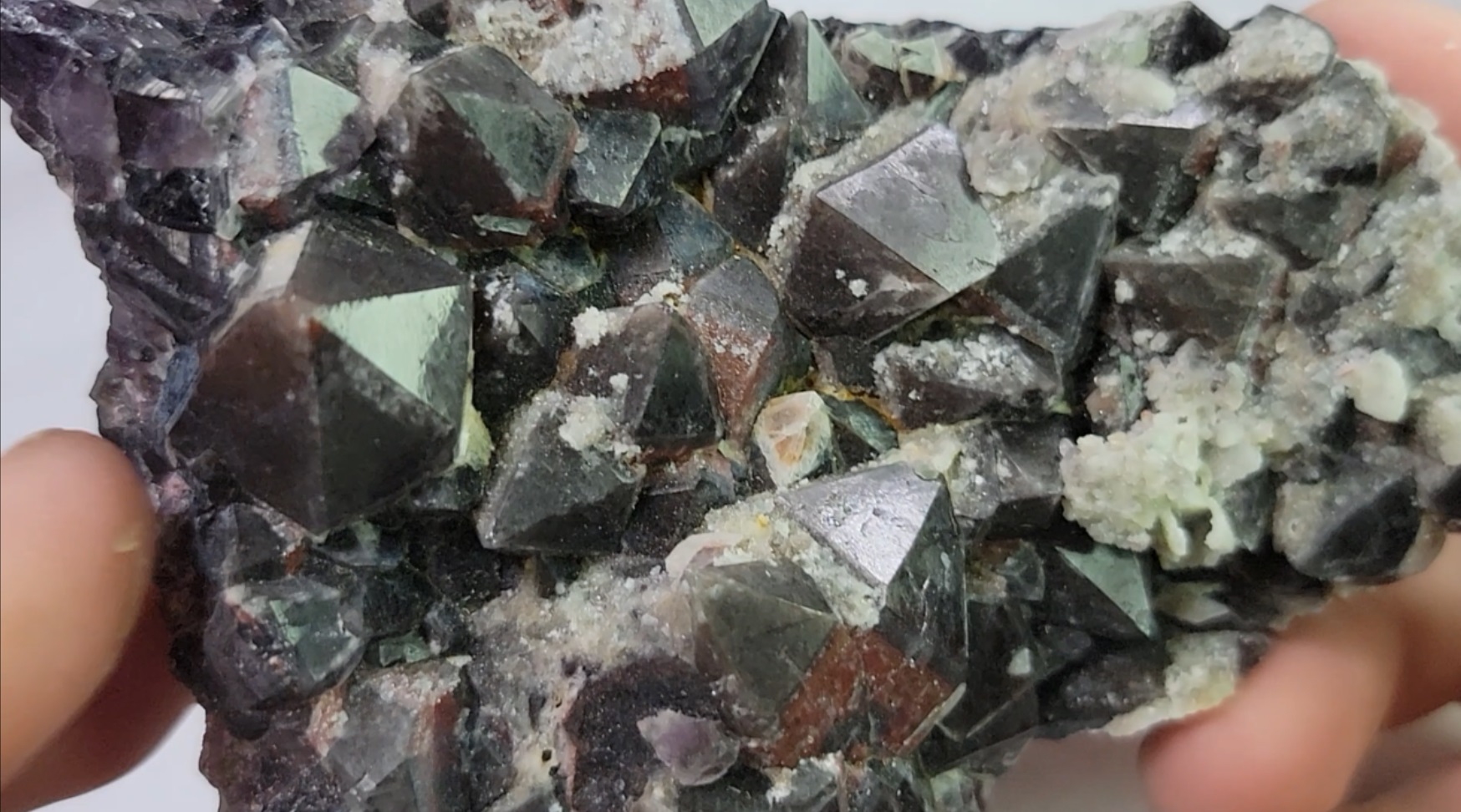



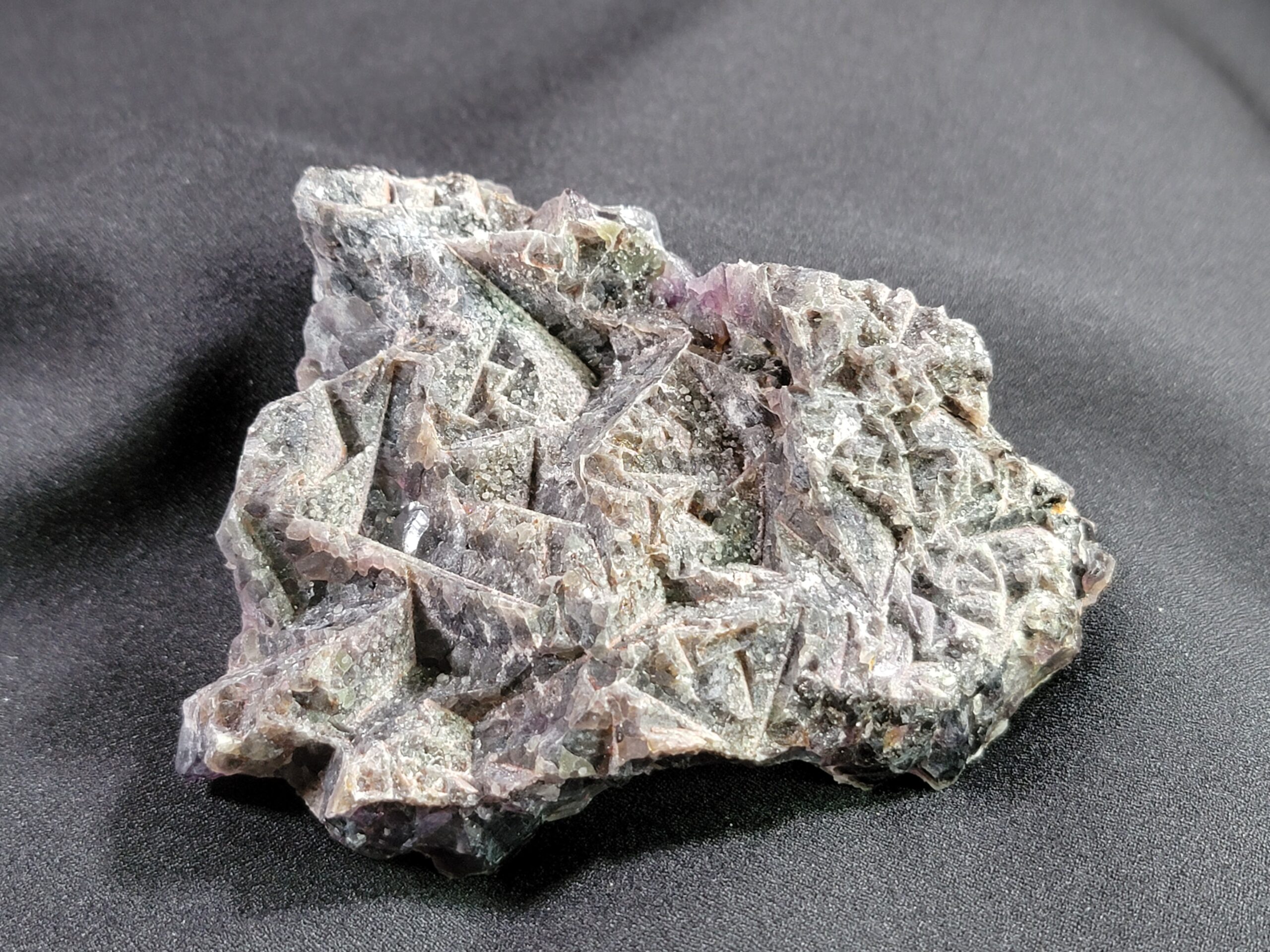

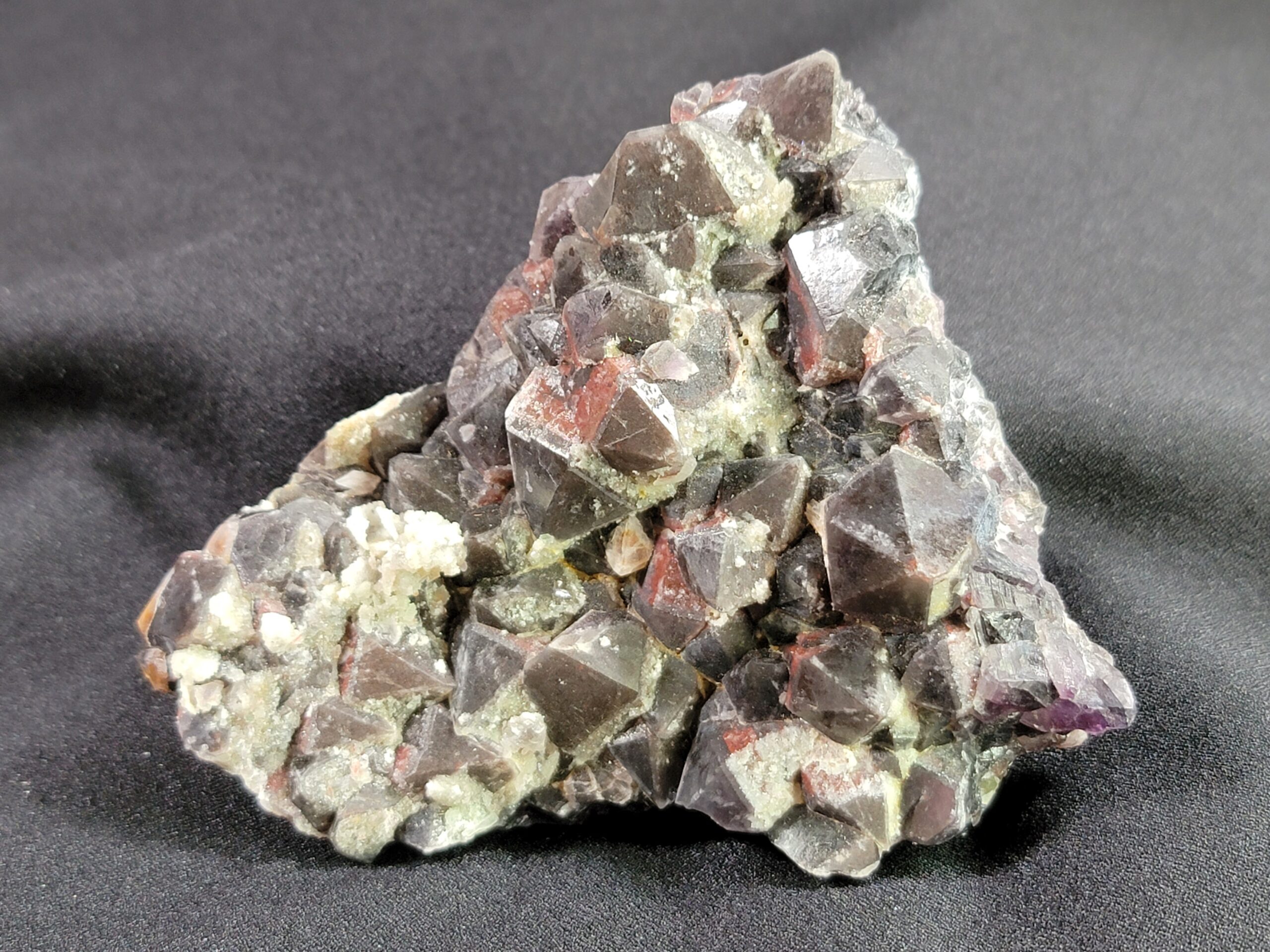


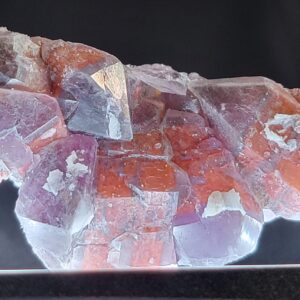
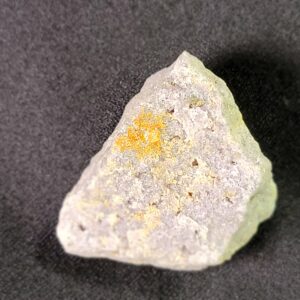


Reviews
There are no reviews yet.